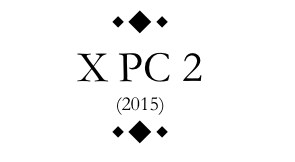 Bunaken is an island of
8 km², part of the Bunaken National Marine Park. Bunaken is located at the
northern tip of the island of Sulawesi, Indonesia. It belongs
administratively to the municipality of Manado. Scuba diving attracts many visitors to the island.
Bunaken is an island of
8 km², part of the Bunaken National Marine Park. Bunaken is located at the
northern tip of the island of Sulawesi, Indonesia. It belongs
administratively to the municipality of Manado. Scuba diving attracts many visitors to the island.
Bunaken National Park
extends over an area of 890.65 km² of which only 3% is terrestrial,
including Bunaken Island, as well as the islands of Manado Tua, Mantehage, Nain and
Siladen.
The waters of Bunaken
National Marine Park are up to 1,566 m deep in Manado Bay, with temperatures ranging between 27 to
29 °C. It has a high diversity of - corals, fish, echinoderms or sponges. Notably,
7 of the 8 species of giant clams that occur in the world, occur in Bunaken. It
also claims to have seven times more genera of coral than Hawaii,and has more than 70% of
all the known fish species of the Indo-Western Pacific.
Oceanic currents may
explain, in part, why Bunaken National Marine Park has such a high level of
biodiversity. Northeasternly currents generally sweep through the park but
abundant counter currents and gyros related to lunar cyclesare believed to be a trap
for free swimming larvae. This is particularly true on the south side of the
crescent-shaped Bunaken Island, lying in the heart of the park. A snorkeler or diver in the vicinity of Lekuan or Fukui may
spot over 33 species of butterfly fish and numerous types of groupers, damsels, wrasses and gobies. The gobies, smallish fish
with bulging eyes and modified fins that allow them to attach to hard surfaces,
are the most diverse but least known group of fish in the park.
 A very rich coral ecosystem covers
most of Bunaken National Park, dominated by fringing reef and barrier reef corals.There
are about 390 species of coral recorded in the waters of the Park. A distinct feature is a 25-50 metre
vertical coral wall which is inhabited by 13 coral genus. The seaweeds that can
be found here include Caulerpa, Halimeda,
and Padina species,
while the dominant seagrasses,
in particular in the islands of Montehage and Nain, are Thalassia hemprichii, Enhallus acoroides, and Thalassodendron ciliatum.
The park is also abundant in different species of fish, marine mammals and
reptiles, birds, molluscs and mangrove species.
A very rich coral ecosystem covers
most of Bunaken National Park, dominated by fringing reef and barrier reef corals.There
are about 390 species of coral recorded in the waters of the Park. A distinct feature is a 25-50 metre
vertical coral wall which is inhabited by 13 coral genus. The seaweeds that can
be found here include Caulerpa, Halimeda,
and Padina species,
while the dominant seagrasses,
in particular in the islands of Montehage and Nain, are Thalassia hemprichii, Enhallus acoroides, and Thalassodendron ciliatum.
The park is also abundant in different species of fish, marine mammals and
reptiles, birds, molluscs and mangrove species. About 90 species of fish live in
the waters of the park, among them being the Emperor Angelfish, Almaco Jack, Spotted Seahorse,Bluestripe Snapper, Pinkish Basslet and Two-lined monocle bream. The species of mollusc
include the Giant Clam, Horned Helmet Shells, Chambered Nautilus, and ascidians.
About 90 species of fish live in
the waters of the park, among them being the Emperor Angelfish, Almaco Jack, Spotted Seahorse,Bluestripe Snapper, Pinkish Basslet and Two-lined monocle bream. The species of mollusc
include the Giant Clam, Horned Helmet Shells, Chambered Nautilus, and ascidians.
It is claimed that this park has
seven times more genera of coral than Hawaii, and more than 70% of all the known
fish species of the Indo-Western Pacific.
On land, the islands are rich in
species of palm, sago, woka,
silar and coconut. Among the animal species that
live on the land and the beaches are Celebes crested macaque,Timor Deer,
and Sulawesi bear cuscus. The mangrove forest of
the Park contains, among others Rhizophora and Sonneratiaspecies.
This forest is also rich in species of crab, lobster, mollusc,
and sea birds such as gulls, herons, sea doves, and storks
The area is densely populated, with 22 villages inside the
park comprising about 35,000 people. Most locals work as fishermen or farmers
cultivating coconut, sweet potato, banana or seaweed for export, while a small number are
employed in tourism as dive guides, boat operators and cottage staff. Tourism is strongly developed, with
accommodation ranging from backpacker cottages to 5 star resorts. Between 2003 and 2006 the number of
visitors ranged from 32,000 to 39,000 of which 8-10,000 were international
visitors.
- Misbahul Hayat & Muhammad Aldi Al-Falah
- Misbahul Hayat & Muhammad Aldi Al-Falah


No comments:
Post a Comment